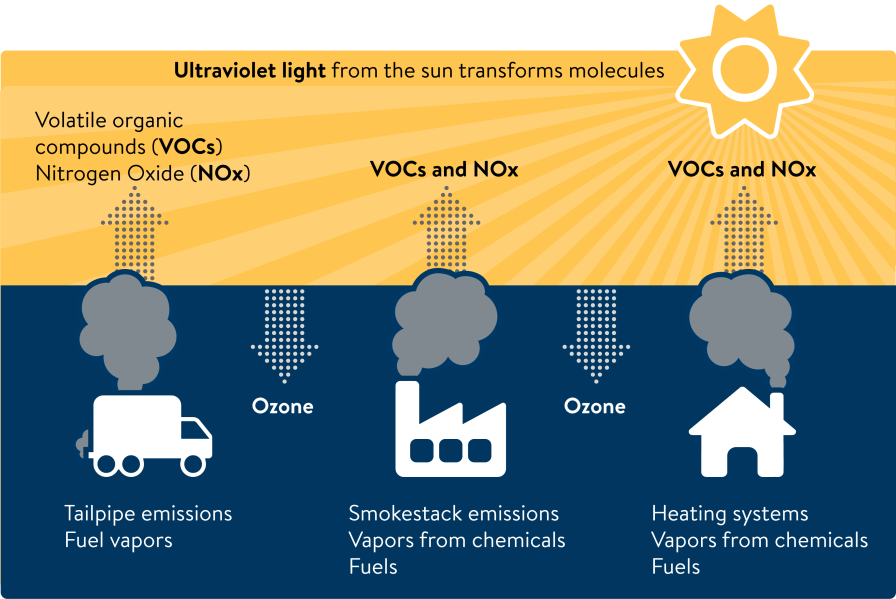Ground-level ozone is a secondary pollutant formed through chemical reactions between nitrogen oxides (NOx) and volatile organic compounds (VOCs). Ozone can irritate the eyes, nose and throat, aggravate lung diseases, or increase the risk of premature death in people with heart or lung disease. In Minnesota, there are concerns because levels are relatively close to the national standards.

Sources
Ozone, unlike other criteria pollutants, is not emitted directly by any one source. Sources of the NOx and VOCs that contribute to ground-level ozone include vehicles, lawn and garden equipment, paints and solvents, refueling stations, factories, and other activities where fossil fuels are burned. Ground-level ozone, which exists in the atmosphere close to earth, is not the same as the "ozone layer" in the earth’s outer atmosphere.
Human health and environmental concerns
Ozone can irritate the eyes, nose and throat, and can aggravate asthma, bronchitis, and other lung diseases. Exposure to high levels of ground-level ozone can increase the risk of premature death in people with heart or lung disease. Children, whose lungs are still forming, are at higher risk from increased ozone, particularly if they spend lots of time outdoors.
Monitoring, reporting, and regulations
Ozone is one of six common air pollutants called criteria pollutants. Criteria pollutants are subject to primary and secondary National Ambient Air Quality Standards under the Federal Clean Air Act. Primary standards define the air quality required to prevent adverse effects on human health; secondary standards are set to prevent adverse impacts on the environment.
Minnesota is currently in compliance with national standards for all six criteria pollutants. However, ozone levels are of concern because levels in the state are relatively close to the national standards.
Rules requiring emissions reductions for power plants, vehicles, and other industries should reduce ozone pollution levels in Minnesota. However, the impacts of climate change, such as hotter summers and wildfires, raise ozone levels.